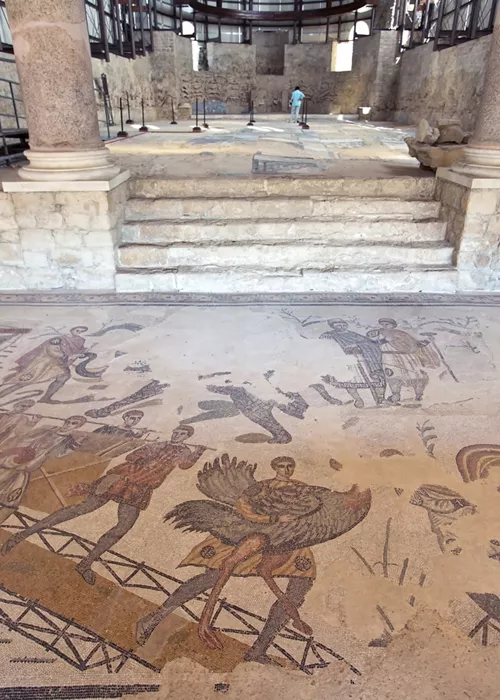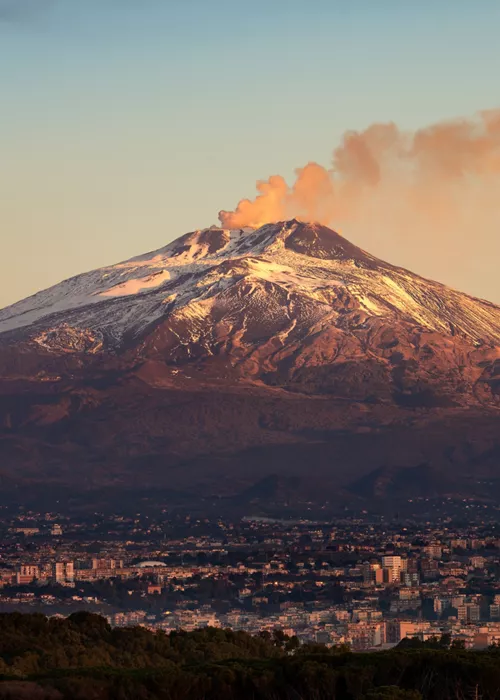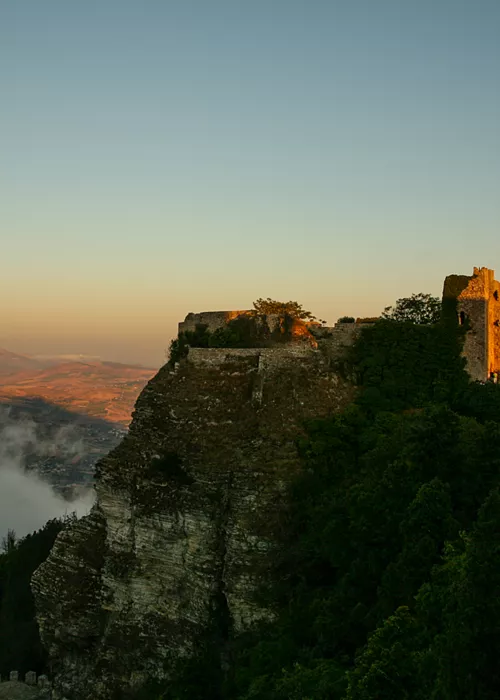Favignana, the paradise island with a turquoise sea
Favignana, the largest of the Egadi Islands, is a cluster of shallow bays with a turquoise sea, listed as a marine protected area. Its flat coastline makes it easy to get around on foot or by bicycle, so that you can discover a different beach every day. In what used to be one of the largest tuna fisheries in the Mediterranean, a museum has been opened in the harbour bay to retrace the history of tuna fishing.
Beaches for all tastes
Favignana's beaches can cater for all tastes and needs: that of Praia, near the harbour, Cala Azzurra, Lido Burrone, the Calamoni, in the south-east, are all mainly sandy. The coast of Punta Lunga, the Preveto and Faraglioni beaches, on the other hand, have sand mixed with pebbles. Cala Rossa, on the north-eastern coast, offers both rocks and sand, while Grotta Perciata, Punta Fanfalo and Cavallo are completely rocky.
A Marine Protected Area
The sea that laps Favignana is included in the Marine Protected Area (MPA) of the Egadi Islands, a marine park that is particularly important not only for its size (54,000 hectares, the largest in Europe), but also for its geographical position: the park is in fact the first point of arrival for algae and oceanic fauna that move with the Atlantic currents, a flow of water that rises to the surface just near the Egadi Islands with its important biological richness.
The MPA aims to preserve the fauna, which is particularly rich in protected or vulnerable species, including the monk seal, bluefin tuna, sea turtle, dolphin, sperm whale, sharks, manta rays and various species of fish and molluscs.
To enjoy the sea, take a boat with the local fishermen who organise excursions to the caves and fishing-tourism activities: many of them are former tuna fishermen who can tell you how the tuna fishing took place.
The stone quarries of Favignana
For centuries, calcarenite, improperly called tuff, a very compact, light-coloured building stone, was quarried on Favignana. The quarrying has left deep traces everywhere, particularly in the north-eastern area, of open quarries that, now abandoned, are used by the inhabitants to make vegetable patches and gardens protected from the wind where fruit trees such as figs, almonds and citrus fruits grow.
Some quarries near the coast have become convenient descents to the sea or have created extravagantly shaped pools: where they are slowly being re-naturalised, they create striking environments. Go and see Cala Rossa, where quarrymen have left tall tuff columns that resemble those of a cathedral.
What to do in Favignana
On the island you can take long, easy walks both along the coast to explore the beaches, and in the hilly part towards the Fort of Santa Caterina, an ancient watchtower rebuilt by Roger II the Norman and later used by the Bourbons as a prison. Today it is an extraordinary observation point for the entire archipelago and the western coast of Sicily.
Visit the museum built in the former Florio factory, one of the largest ancient tuna fisheries in the Mediterranean, which houses an exhibition with videos and evidence of tuna slaughter, as well as a room with archaeological finds.
From the port of Favignana you can set off on an excursion to the island of Levanzo, where the sea is possibly even more transparent and inviting.
On this island, of particular interest is the Grotta del Genovese, where a number of paintings and engravings dating back to the Neolithic period can be seen, including the silhouette of a tuna, an animal that has always been important to the communities that have lived on these islands. The cave can be reached on foot, but you must first contact the attendant at the harbour, or by boat.
Fishballs, steaks or tartare: tuna is served
The main ingredient of Favignana cuisine is tuna, which is fished between May and June and eaten as tartare, tasty fishballs or grilled steaks. There are also specialities such as spaghetti alla bottarga (tuna roe) and tuna carbonara. In the restaurants you will also find pasta with sea urchins, Egadi lobster and plenty of other fish, and there is no shortage of cous-cous, as is the case throughout eastern Sicily. For dessert, try the granitas in various flavours, also accompanied by brioches, cannoli and cassatas that go well with a glass of Marsala.



























